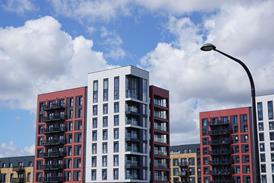Dual mode cameras (sometimes referred to as colour/mono, night/day or changeover) represent one of the most significant developments in CCTV camera technology in recent years. They are used to overcome the fundamental difference between a standard colour and monochrome camera by combining the characteristics of both types.
As with many development cycles, early examples of the Dual Mode approach were costly and imposed some compatibility restrictions. The most widely adopted approach that came to be accepted by most installers was to move a filter to and from the front of the CCD sensor to facilitate the changeover.
This still represented a relatively costly approach and more recent attempts by many manufacturers have relied on simply removing the IR filter that would normally be used in front of the colour camera's CCD. Our experience of this solution was largely unsatisfactory, as the colour reproduction during daylight hours was extremely inaccurate.
The CC650 represents a further development in the Dual Mode sector because although the high economy route of using a fixed filter has been employed, the advanced filter and amplifier electronics in the CC650 ensure faithful colour reproduction as well as outstanding monochrome performance.
The highly successful Vantage CC620 colour camera (Bench Test, Installer November 97) provided the ideal platform for the new model, having been proven in the field as probably the highest performance 1/2 inch camera within this price range. The new CC650 offers the same competitive features but with the added bonus of being a camera that can truly be used in any application.
WHAT OUR EXPERTS SAY ...
These days it does not take a great deal of technical expertise or engineering skills to build a video camera. Board camera modules, off-the-shelf mouldings and housings make it easy for companies to set up in the camera manufacturing business. However, there is a lot more to camera design than slapping a bunch of ready-made components together in a box. It has to be said that some of the cameras we come across appear to be semi-disposable items that are unlikely to survive much beyond their warranty period.
Fortunately most surveillance cameras are built to last and every so often we see one – such as the Vantage CC650 – that appears to be almost indestructible. So is it the sort of camera that end-users will be passing on to their grandchildren? The CC650DC model which we are looking at here is one of a trio of robust general-purpose colour cameras. This particular model is powered from a 12 volt DC supply; mains powered and 24 volt AC versions are also available. It is based around a 1/2-inch interline transfer CCD image sensor with a 752 x 582 pixel array. Resolution is quoted at 460 lines with a low light sensitivity of 1.5 lux .
It has a fairly routine specification with three exposure control options: manual electronic shutter (1/50th to 1/2000th sec), auto electronic shutter and auto iris (video or DC controlled). Additional exposure aids include switchable backlight compensation and AGC plus manual or auto-tracing white balance. AC powered versions have a line-lock function for external synchronisation and all models automatically suppress colour information to improve sensitivity in low-light conditions.
From the outside it looks fairy conventional. On the front there is a standard C/CS lens mounting collar and on the back there are two video output sockets, a BNC connector carrying composite video and a four-pin mini DIN (Hosiden) socket for Y/C (S-Video) output. A screw terminal handles the DC supply and there is a standard four-pin socket for an auto-iris lens.
On the left side of the camera body there is a thumbwheel for setting back-focus and C/CS lens adjustment and a sliding cover opens to reveal a group of set-up controls. These comprise four rotary presets for red and blue gain, DC level and ALC adjustment. A ten-way rotary switch sets shutter speed, there is a three-position slide switch for selecting AI mode/lens type and a four-way miniature DIP switch for backlight control on/off, auto/manual white balance, AGC on/off and internal/line-lock synchronisation.
Standard 1/4-inch threaded mounting bosses are moulded into the top and bottom halves of the case. The only notable omission is any kind of power-on indicator. This is not a big problem but a LED on the back or front can be a handy diagnostic tool.
The strength and rigidity of the case are immediately obvious from the weight (500g for the DC powered models), heavy-duty alloy castings form a rigid shell measuring 140 x 73 x 62mm. There is more evidence of the build quality inside the case, starting with the back focus adjustment. This is a mini-masterpiece of engineering, far more complicated than it needs to be, but this kind of attention to detail really pays off. The action is smooth and progressive, allowing very precise adjustment.
There are four glass-fibre PCBs, smothered in densely-packed surface mount components. The camera board at the front moves back and forth on a rigid cradle, the others are bolted firmly to pillars and brackets moulded in the bottom half of the case. Connections to the camera board are via a pair of flexible ribbon cables, the other boards plug into one another and the sockets on the back panel are wired to the boards using miniature plugs and sockets. It is all very neat, and there is little or no opportunity for things to work loose or intermittencies to develop.
While the case parts are a close fit the camera is not (nor does it purport to be) weatherproof, though it is reasonably well protected against the ingress or dust, dirt or other airborne contaminants.
SETUP & OPERATION
The instructions comprise one double-sided A4 sheet and to be frank they are a bit brief but it does contain all of the information most experienced installers are likely to need. There is really very little to go wrong.
The only word of caution we would add is that the lens mount is factory set to C/S position with the sensor at the forward position. A warning slip is included in the box to that effect but it is easy to miss and screwing on a C-mount lens without checking first would almost certainly result in the destruction of the CCD. The adjustments and presets are all fairly easy to get at, provided a wall or surface does not obstruct access to the left side of the camera.
PERFORMANCE
The rigidity of the case, wiring and the components inside was borne out by our shock tests and the image remained rock steady, even when the case was subjected to quite heavy knocks and vibration. Resolution on a composite video connection came in at just under 450 lines, which is acceptably close to the manufacturer's figure.
Changing to an S-Video feed made a small but noticeable difference to picture quality; fine detail looked just a tad crisper and patches of heavily saturated colour were sharper, especially around the edges.
On a well-lit scene – illuminated with natural light – picture noise levels are very low indeed. The auto exposure system responds fairly quickly to sudden changes in lighting level though it can have trouble dealing with bright lights in the image area and a lot of detail is lost in darker areas of the picture.
The backlight compensation function helps but it means that a little extra care should be taken with alignment, to take account of shadows and windows or lights in the scene. Colour accuracy is good in daylight or tube light but manual intervention may be needed to offset the errors that can occur when there is a mixture of lighting sources.
Colour suppression in poor light is progressive, and can be very effective, but for some reason it only works when the AGC function is switched on.
Overall assessment
What the CC650DC lacks in flashy features or fancy styling it more than makes up for with good all-round performance and the ability to function effectively in a wide range of conditions and environments. However, the overriding feeling is one of strength and solidity. It is a cost-effective workhorse of a camera that gives the impression that it will still be earning its keep long after many of its less well-built contemporaries have given up the ghost.Source
Security Installer



















